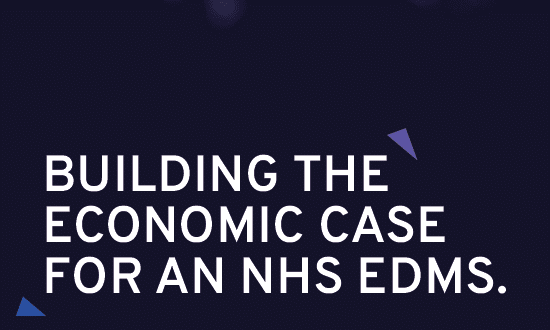Expert view: Guy Beaudin
- 2 September 2010
 Guy Beaudin
Guy Beaudin
The announcement of the cancellation of the Enterprise-wide Agreement between the NHS and Microsoft represents both a political and an IT management change.
It is part of the move from the centralisation of IT and procurement that Labour brought in, to the more distributed and market-driven model endorsed by the Conservative-Liberal Democrat coalition.
In an ideal world, each NHS trust would simply take over management of its own licenses and achieve cost savings, because they know their requirements better than anyone. The truth is that it is not that simple.
While most trusts do have some form of asset management in place, they will have no experience in actively managing this type of software asset because, for the past 12 years, it was done for them.
Many trusts will not know what they are entitled to use or understand the licensing implications of the announcement to withdraw from the EwA. And the future structure of the NHS and its IT programmes is far from clear.
Audit and comply
Microsoft is insisting that every NHS organisation must undertake a process of licensing compliance and a review of all elements of the EwA that were independent of Software Assurance benefits.
The NHS can no longer use Microsoft’s Desktop Optimisation Pack (MDOP) without buying a new subscription license or use Voice over IP (VoIP) in Office Communications Server (OCS) without buying Software Assurance.
According to Microsoft: “To start the process of licensing compliance, a distinct line has to be drawn in NHS infrastructure as of 31 May 2010.
“This was the last day of the Enterprise-wide Agreement and therefore is key to defining the infrastructure (PCs, devices, etc) that can make use of the perpetual rights of the terminated agreement, and anything new that cannot. All organisations need to have a clear record of activity pre and post 31 May 2010 to maintain compliance on any new devices.”
The perpetual rights are part of a final ‘true up’ between NHS Connecting for Health and Microsoft, which determined the exact number of licenses that are now part of the NHS overall pot. There is a finite number of licenses that will need to be shared by all NHS organisations.
Some complexities
The prevalence of freely available Microsoft software for the past 12 years has had a huge impact on all of the IT systems developed within the NHS.
Most of the applications developed for human resources, payroll, eRostering, transaction integration engines (TIE), single sign-on (SSO), security, electronic data records management (EDRM), email, and so forth were developed with intrinsic links to Microsoft platforms.
The historical development investment in IT systems is going to make it difficult or expensive for NHS organisations to move away from Microsoft platforms.
A lesser known benefit that the NHS received from Microsoft’s Software Assurance within the EwA was the Home User Programme.
This gave all NHS employees the opportunity to purchase Microsoft Office as a discounted rate of £8.95 – but only while the NHS had an active EwA. Unfortunately, this benefit is no longer available. Every NHS employee who purchased this discounted software must now remove it from their home PCs or purchase a fully licensed copy from Microsoft – at a cost of £109.99.
To make matters more complex, the government published its white paper ‘Equity and excellence: Liberating the NHS’.
One of its core themes is dissolving most of the central management functions within the NHS, including disbanding strategic health authorities and primary care trusts. This means that CfH is passing license rights to organisations that are going to be disbanded in the very near future.
Pointers to the future
The decentralisation of most functions within the NHS will mean that many of its national IT programmes will be in jeopardy.
It is likely that each trust, practice, or other NHS body will be given the right to define its own IT systems; providing that they are interoperable; although the interoperability specifications are yet to be defined.
Ideally, this would help these organisations to save on costs because they will only be paying for the IT assets they need, rather than being lumped in with everybody else.
However, the reality is that the level of skill required to achieve this saving is not evenly distributed across the NHS, so not everyone will be able to make the savings they need to through a lack of knowledge or awareness.
So what does this really mean for NHS IT in the future? Firstly, understanding software licensing will be a critical skill for all IT managers and decision-makers in the healthcare space.
Microsoft licensing can be tricky to understand at the best of times, while the developments around Software as a Service and cloud computing approaches make deciding on the right approach more difficult.
Establishing what different groups of end-users require, how these services can be best delivered to them, and then what is the best approach to pay for these licenses is an in-depth conversation to have with each trust.
Instead of the NHS taking responsibility for all – and using its sheer size to drive the best bargain – each trust will have to make its own purchasing decisions in order to achieve any cost savings.
Secondly, as this responsibility gets pushed back into individual trusts – and potentially into GP commissioning consortia – IT providers will need to earn the right to do business with them rather than with CfH.
This opens up the market to all eligible Microsoft suppliers – not all of whom have experience of working in the health sector. Trusts will need to find suppliers that can provide the right mix of services and understand local needs better than competitors, and by default add real value into each licensing deal.
Opportunities and threats
The repercussions of not renewing Microsoft EwA licenses in the NHS go beyond saving money for a cash-strapped central government.
From a political perspective, there is a big opportunity here for local health organisations to realise better results for their communities than can be offered by a centralised approach.
However, this can only be achieved if the organisations themselves really understand what they require, how they link together, and how to pay for it.
About the author: Guy Beaudin is a specialist in public sector ICT and business development for Insight. With over 25 years experience, he is a professionally accredited bid/proposal manager with a specialism in IT law.




